No, this isn’t a political post, although governments are involved. The non-political damage that needs to be repaired involves the dam at Glen Villa, my garden in the Eastern Townships of Quebec, and the pond the dam created.
The pond dates back well over 100 years, to about 1870 or so, when a stream was dammed to provide power for a sawmill. In the days of Glen Villa Inn, the grand resort hotel that stood on the property from 1902-1909, hotel guests fished for trout in the pond. That’s when they weren’t playing golf — a drive across the pond to the hills beyond was the first hole on the hotel’s 9-hole course.
The site was a powerful local attraction as well, deemed so appealing visually that it featured not only in the hotel’s brochure but in advertising campaigns by the village of North Hatley where the hotel was located.
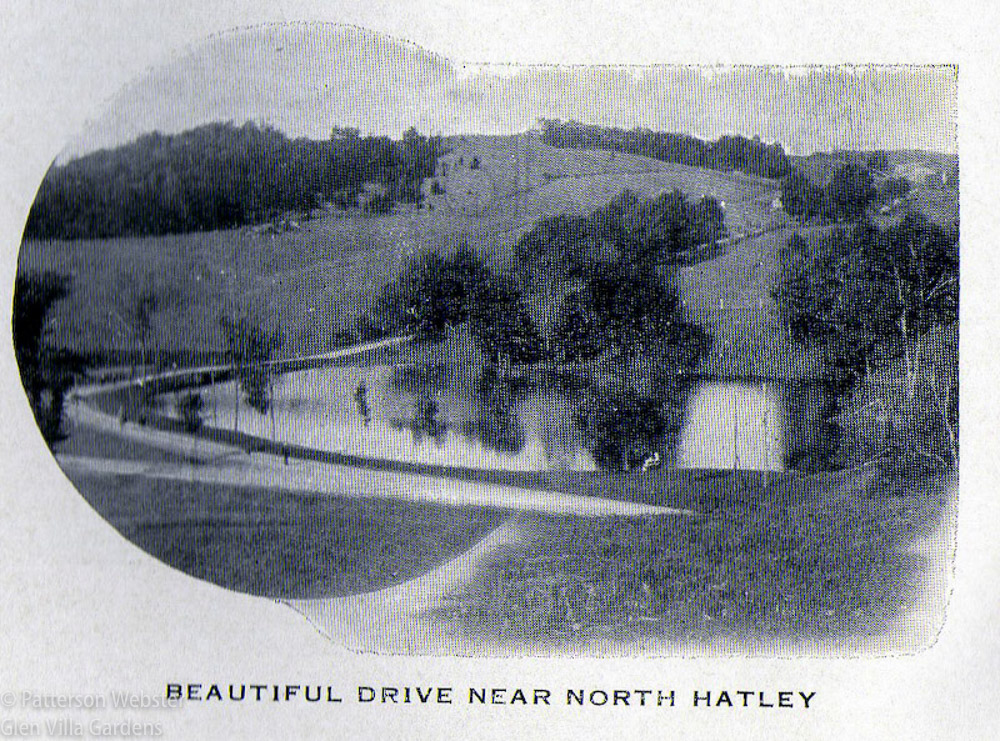
The road going up the hill separates two parts of the so-called trout pond. The stream that forms the pond flows from right to left in this photo, towards the dam, the waterfall and Lake Massawippi. Compare the size of the pond here with the view in the last photo of this post — what a change!
The waterfall that the dam created was an even bigger attraction.
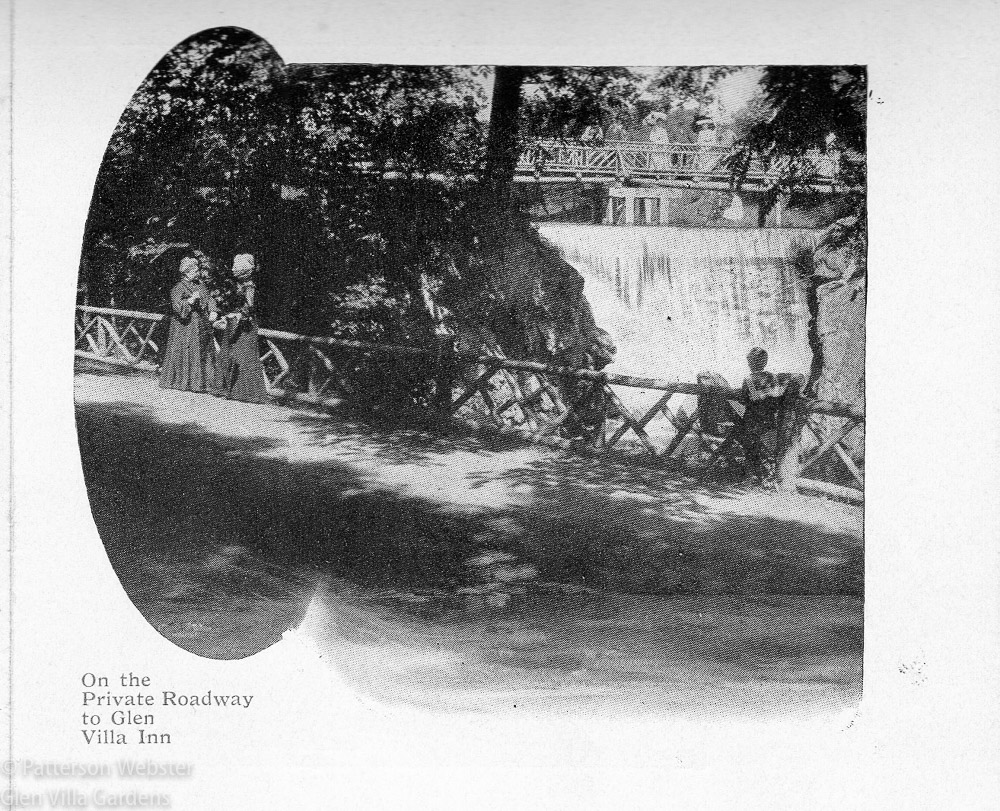
A lady artist (as she would have been called) paints the dramatic scene. Nearby two ladies in black have a quiet conversation. I believe they are Civil War widows… but that may be wishful romanticism on my part.
It still is. Driving in and out from our house, the waterfall and the gorge, or glen, formed by the stream, offer dramatic views in every season. In summer, after a storm, water pours over the rocks with a force that is almost frightening.

The bridge over the waterfall seen in the photo above rotted many years ago and was never replaced.
In winter, when snow caps the rocks and icy beards dangle, the water slows to a freeze.

Sometimes snow covers the dam completely, making it appear like a huge feather bed.
But now the dam needs to be repaired. Instead of water flowing over the main portion, it is taking the easiest route, using a side channel built in the 1960s to manage high water levels. The reason is simple: after about 60 years, the cement on the side channel is crumbling, making it lower than the main section.
Repairing this defect isn’t a major job but permits from the local and regional authorities as well as from the provincial Ministry of the Environment are required. I applied for a permit a few years ago because the pond was silting up. My request was denied — the shallower pond was not an environmental problem, only an aesthetic one.
A few days ago I was fortunate enought to received a permit to repair the dam but I’m still waiting to discover if I’ll get a permit to dredge the pond. This is now essential, not because the pond is too shallow but because the silt is too deep. It is blocking the water intake for a fire hydrant, making the hydrant useless and the municipality potentially liable, should a fire occur.
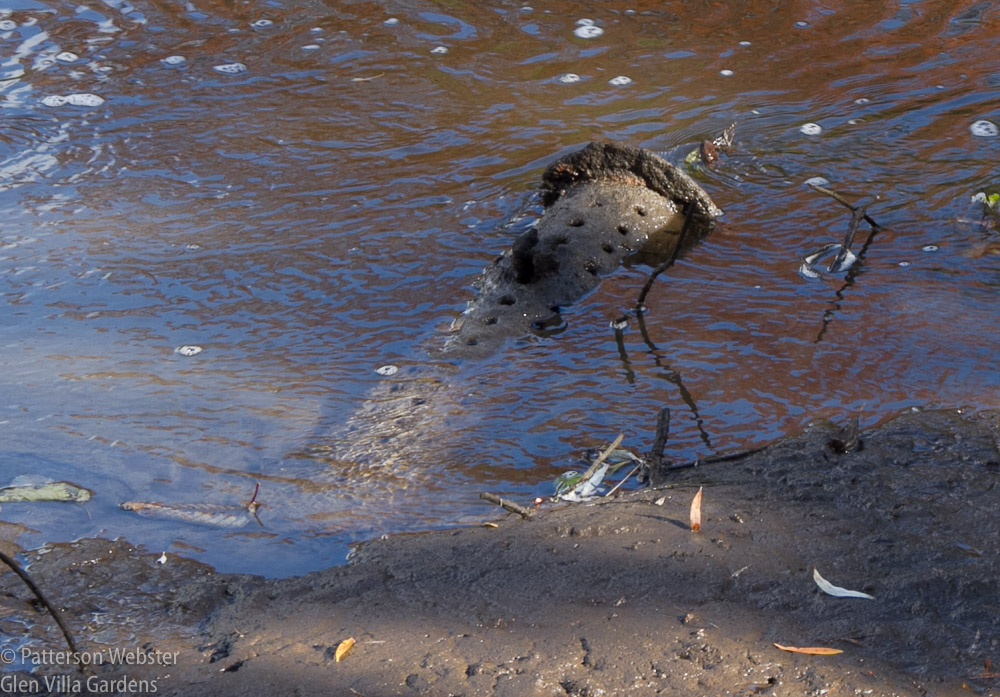
When we installed the pipe, it was three feet or more above the bottom of the pond. Now mud is blocking the pipe that leads to the fire hydrant, rendering it useless.
We discovered the problem when we began to drain the pond, a necessary first step in order to repair the dam. Draining a naturally fed pond takes time — it took more than three days in our case.

To drain the pond, we open a sluice in the dam. Water pouring out of that small hole creates a mini-waterfall.
With most of the water gone, the need to dredge became clear — the blocked pipe was evident immediately. But while we wait for the permit to be issued, the pond simply sits there, no longer its lovely self …
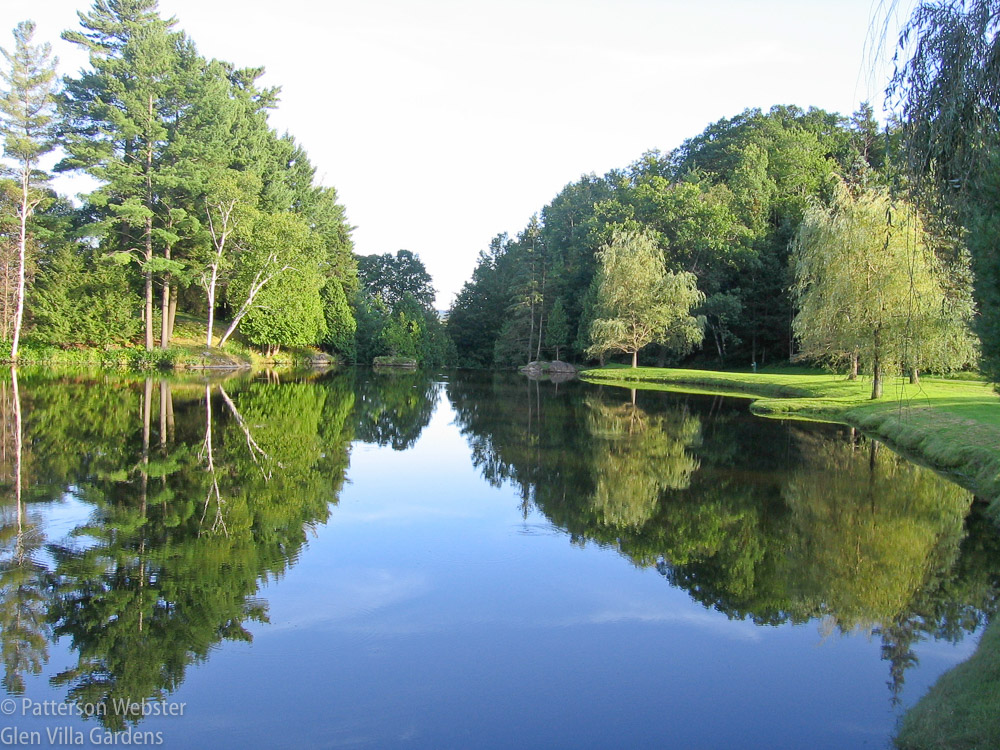
I took this photo standing on the road that separates the two parts of the pond, above and below the bridge. The dam is where the reflections of the trees meet.
but an unattractive, muddy mess.
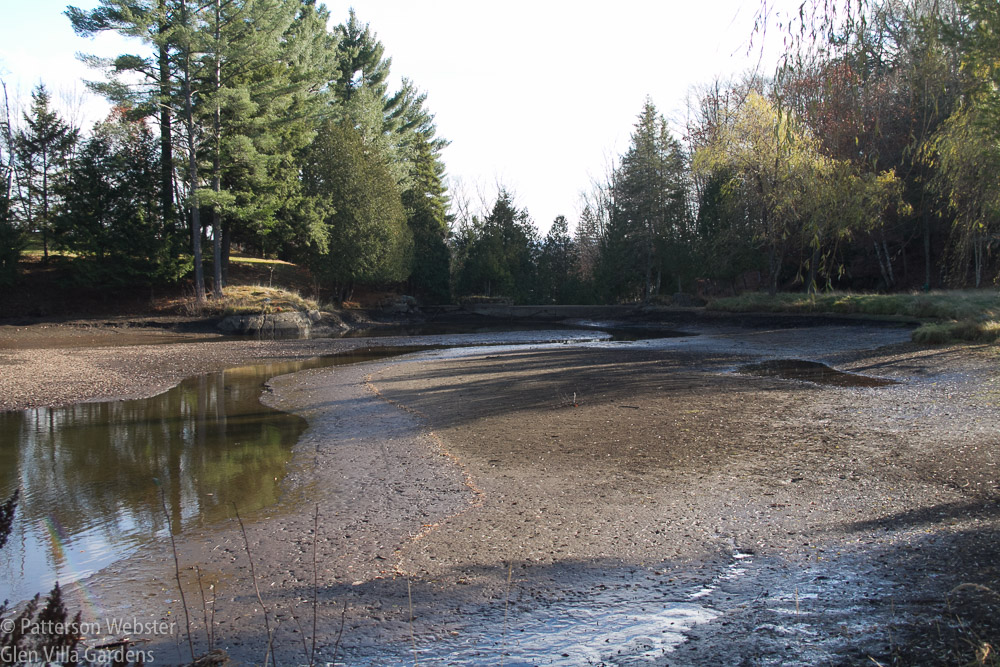
The view from the public road towards the dam shows how much water remains, even after three days. It also shows where gravel and silt have been deposited and where the water continues to cut a channel.
Standing near the dam and looking in the opposite direction, towards the bridge and the public road, the contrast between a pond with water and one without is equally striking. Compare this spring view from a few years ago…
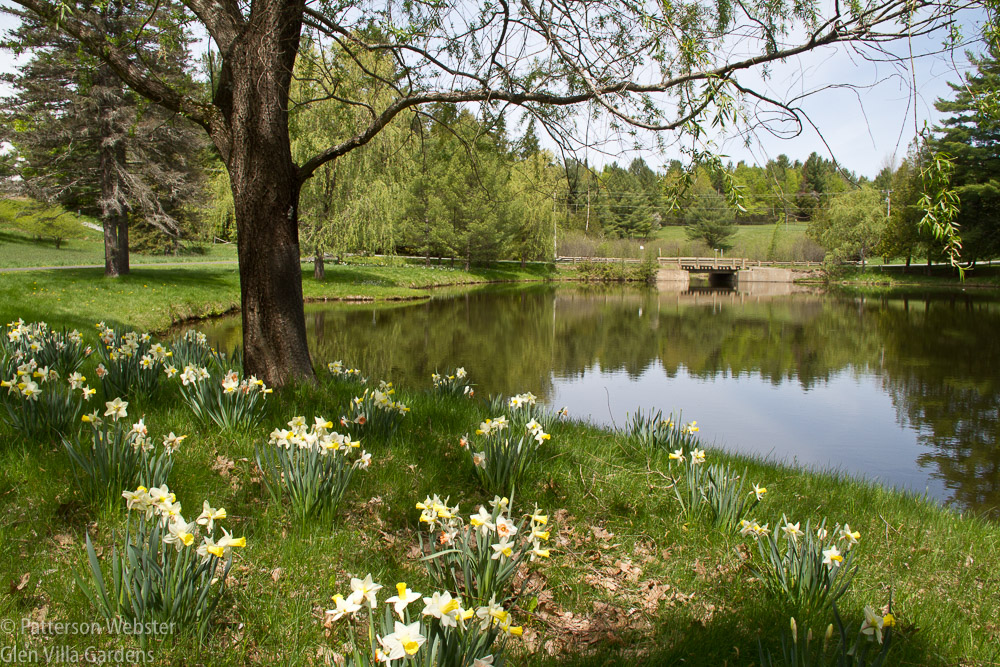
Spring at Glen Villa, with daffodils blooming under a weeping willow tree — quite glorious.
to the current ugliness.
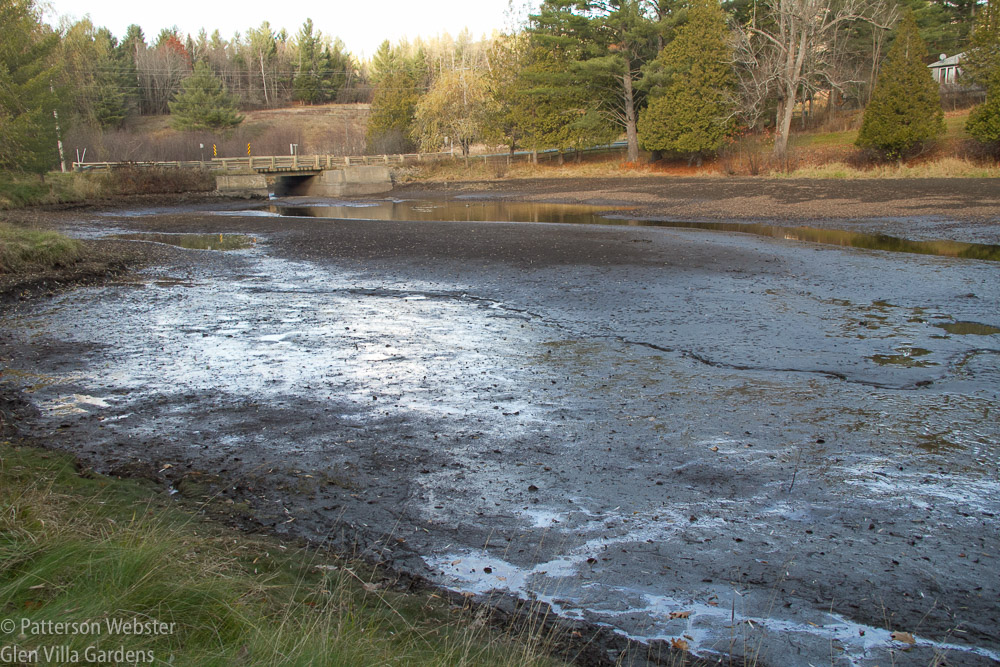
Ugh. What more needs to be said?
On the upstream side of the bridge, the work that needs to be done is even more evident. Silt there has formed a ledge several feet thick and what once was a large pool of open water is now a gravel-based island covered with rough vegetation.
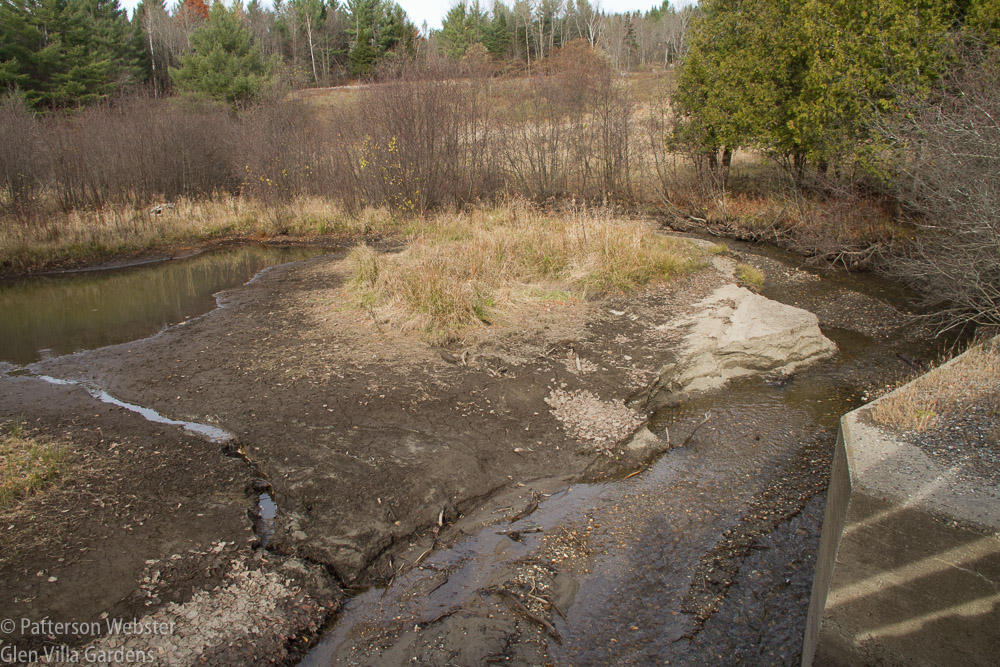
It’s hard to believe that this area was once the large open pond shown in the first photo of this post.
In the twenty years that we’ve owned Glen Villa, we’ve dredged the pond twice. It is a big job, with big equipment. And before the work can start, the mud at the bottom of the pond has to dry out enough to allow heavy machinery to drive onto it. Otherwise, trucks will sink into the muck — not a nice prospect.
So I’m hoping the sun will beat down, the rains hold off and the snow wait to fall until the job is complete. And, of course, that the necessary permits are issued in time.
I’m confident. What is damaged can be repaired. Needs to be repaired. And will be, once the muck is gone.





Pretty ugly and I have never seen it empty before, yuck! Having lived on the other side with the rail tracks they didn’t mess around because as you know if water can’t go where it is suppose to go it goes somewhere else and then you really get some damage!
My husband remembers once when the drive down to the lake next to the pond was washed out — you are right, water always finds its own path.
I hope all goes as planned. I imagine when you drain the pond, you create a new temporary channel and redirect the water somewhere else? That part of it has me perplexed.
Not really, Kathy. The water continues below the dam in a stream that leads to the lake. The first thing that the dredgers do is dig a narrow channel that directs all the water moving through the pond into a single stream. That water goes through the sluice and into the natural stream to the lake. It may sound complicated but it isn’t really.
Thanks, that makes sense. Basically the stream is merely no longer dammed.
Yep, that’s it.
Oh, how frustrating! I hope you can begin work soon.
So do I!
What a HUGE task lies ahead! But with your energy and determination, I would bet the farm on it being completed to your satisfaction before another six months is out… Or even sooner, knowing you!
I can’t work miracles — governments can’t either, but they can — and do — delay ordinary work.